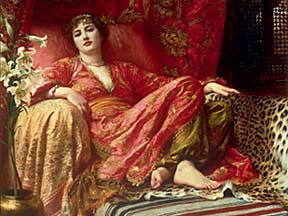 Figurative Art - The Concept
Figurative Art - The ConceptFigurative Art or Figurativism refers to representational art, including the depiction of human or animal figures. More appropriately, Figurativism is an art form that represents a real world image
 The Details
The DetailsFrom ancient times to the modern day art, human figures have been an intriguing factor and the subject of artists the world over. Whether it is curvaceous female figures or muscular male structure, the human body is one of the most exploited areas in painting. The fact takes an interesting note especially because a human body is as obscure as obvious. Touching a demanding scale, there is very little or almost no scope for errors in Figurative Art
 The Correlations
The CorrelationsThe latest buzz in the world of Figurativism is Photo-Realism. The art involves making creations resembling color photographs and figure paintings that appear quite real. This is a more recent area of development in the field of Figurativism. A lot of innovation and work is yet to come.
 The Artists & Artworks
The Artists & ArtworksAll across the globe, ancient cultures offer splendid examples of Figurative Art. One of the earliest being the sculpture of a woman found in Hohle Fels Cave of Southern Germany. The carved figure is more than 35,000 years old and has been sculpted from a mammoth's tusk. Cave paintings in Lascaux, France also portray an array of animals found in the region. Similarly, male human body was considered an ideal for figurative sculptors in Greece
 Renaissance painters were extremely skilled in Figurative Paintings and sculptures. Leonardo da Vinci's (1452-1519) 'The Virgin of the Rocks' (1483-86) and 'The Last Supper' (1495-98) clearly reflect the painter's knowledge of anatomy and his superior skills in Figurativism. Michelangelo's (1475-1564) paintings on the ceiling and walls of the Sistine Chapel in Rome, Italy, clearly reflect his mastery in the art form. 'The Creation of Adam' (1511) is a fresco by Michelangelo, which reflects the biblical story when God breathed life into Adam. 'The Last Judgment' (1534-41), his fresco on the altar wall of Sistine Chapel, is another huge feat and proof of the magnanimity of Michelangelo as an extraordinary Figurative painter.
Renaissance painters were extremely skilled in Figurative Paintings and sculptures. Leonardo da Vinci's (1452-1519) 'The Virgin of the Rocks' (1483-86) and 'The Last Supper' (1495-98) clearly reflect the painter's knowledge of anatomy and his superior skills in Figurativism. Michelangelo's (1475-1564) paintings on the ceiling and walls of the Sistine Chapel in Rome, Italy, clearly reflect his mastery in the art form. 'The Creation of Adam' (1511) is a fresco by Michelangelo, which reflects the biblical story when God breathed life into Adam. 'The Last Judgment' (1534-41), his fresco on the altar wall of Sistine Chapel, is another huge feat and proof of the magnanimity of Michelangelo as an extraordinary Figurative painter.
No comments:
Post a Comment